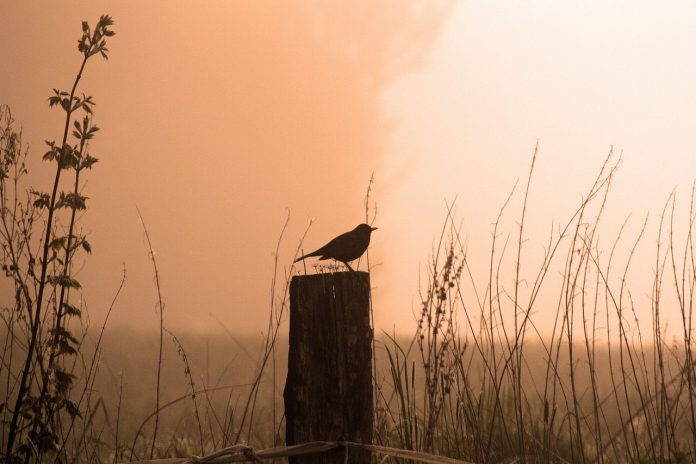The hills are alive with the sound of music. And it’s only just begun.
Familiar voices of spring announce that the annual bird migration is underway. Because spring migrants return slowly in early spring, maybe two or three species per week, it’s a great time to learn new bird songs.
It began in early March with the return of eastern phoebes, a friendly flycatcher that likes to nest on shelf-like projections such as protected window frames, porch light fixtures, rafters of sheds and barns, and rocky ledges.
The songs
The male sings an emphatic two-note, buzzy, Fee-Bee!
In mid-March, I began to hear red-winged blackbirds when I drove past a neighbor’s farm.
The sound is loud, noisy, and discordant — Konk-ka-reee! About that same time, brown-headed cowbirds began to sing near my feeders. The male’s voice is a liquid gurgling sound.
By late March chipping sparrows, field sparrows, and eastern towhees were back.
The chipping sparrows sing a high-pitched, almost boring monotone trill. Field sparrows sing a series of clear whistles that rapidly accelerate into a trill. It always reminds me of a bouncing ping pong ball. And towhees speak English.
Even my daughters, when they were just preschoolers, recognized the towhee’s Drink your tea!
Meadowlarks
Most recently in early April, I’ve been hearing eastern meadowlarks when I drive past large hayfields. Often they sing from fence posts a loud clear, Spring of the year!
In the coming weeks, spring migrants will return at a more rapid pace, so try to learn a few voices as they arrive. Start with the easy ones I’ve just described. Now, let’s understand that birds make two very different types of vocalizations.
The sounds I’ve just described are “songs” that males sing during the breeding season. Birds vocalize throughout the year, and the purpose of nonbreeding sounds varies. It may be tempting to assign human explanations to bird behavior, but such logic misleads.
Communication
Contrary to folk wisdom, birds do not sing for joy. They sing to communicate. Short, nonmusical chips, chirps, and whistles uttered year round convey information about location, food sources and social position.
Other calls rally broods and indicate alarm, danger, aggression and annoyance. These “calls” are the sounds of daily conversation all year long. Calls may seem a dangerous way to communicate because sounds can lead hungry predators to tasty song birds.
But part of the elegance of calls is their brevity. And though brevity may be the soul of wit, it is also the key to survival. Once uttered, calls vanish into thin air, so predators can’t use sound to locate the callers.
When danger threatens, birds simply stop talking until the threat passes. True bird songs (as describe above) are longer, more musical, and usually limited to the breeding season.
Male songs
Males sing to call attention to themselves. Their message depends on who hears the song. Male birds sing to establish and defend a territory from other males of the same species. In this sense, the song is a keep-out signal.
Other males know that if they violate a territory’s boundary, they will be attacked. So they respect territory holders. On the other hand, male song is also an invitation to females.
It says, “I’m available. I can provide for you. Check out my territory. Be my mate.” Song is simply the key to the pair-bonding process.
Another piece of the bird song puzzle is why they sing so early in the morning. Most people know that bird song begins early, but why so early? I hear the first robins and cardinals shortly after 5 a.m.
Increasing light intensity triggers early morning bird song. As dawn breaks, light triggers hormonal activity that results in song. The brighter it gets, the louder and more enthusiastically birds sing.
For example, as soon as one male robin begins to sing, others follow. Those that fail to join the chorus may be seen as weak or inferior by other robins. So they sing, and the morning chorus builds.
As you enjoy the spring chorus with your morning coffee over the next month, understand its biological basis as well as its pure beauty.













